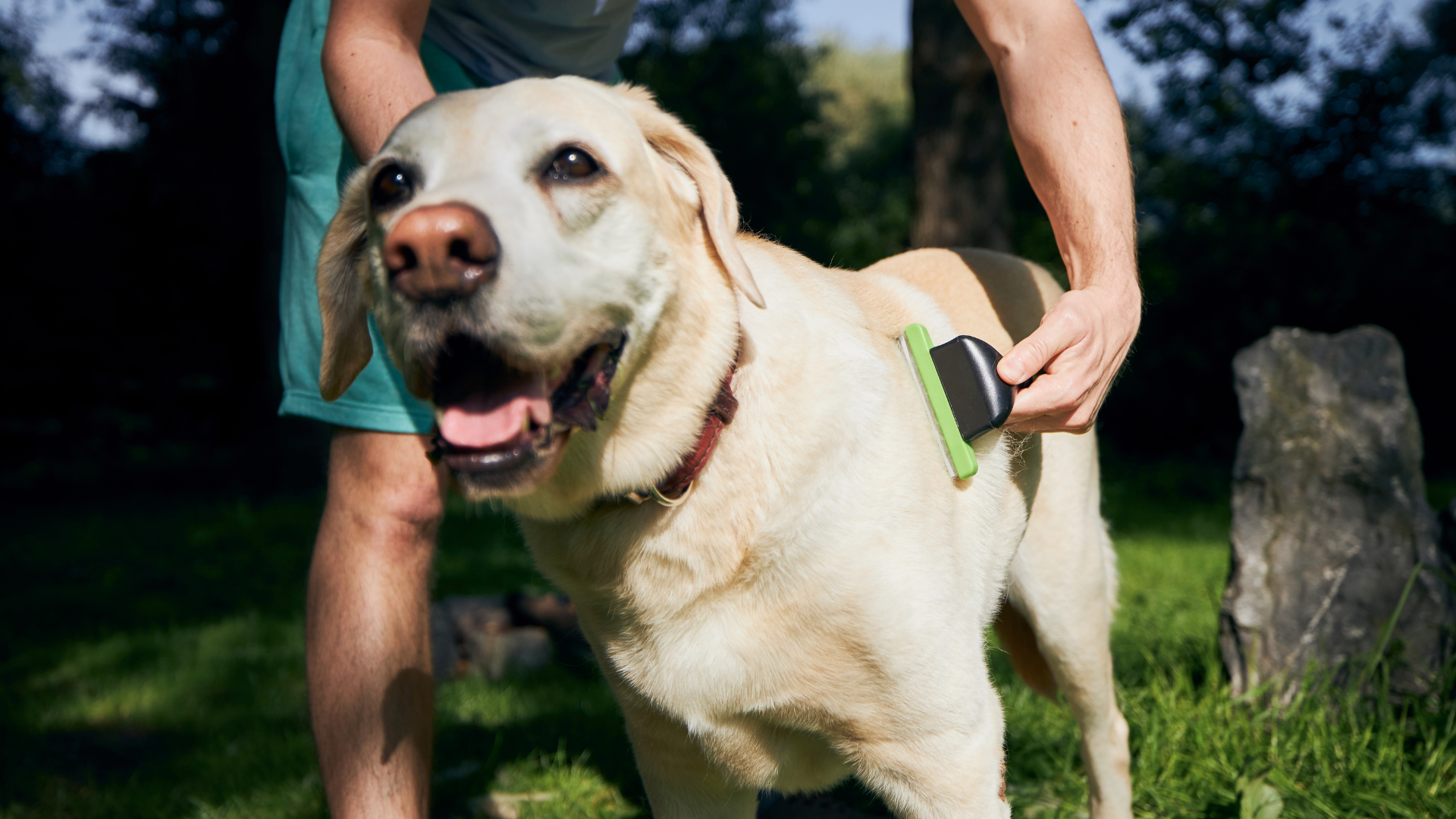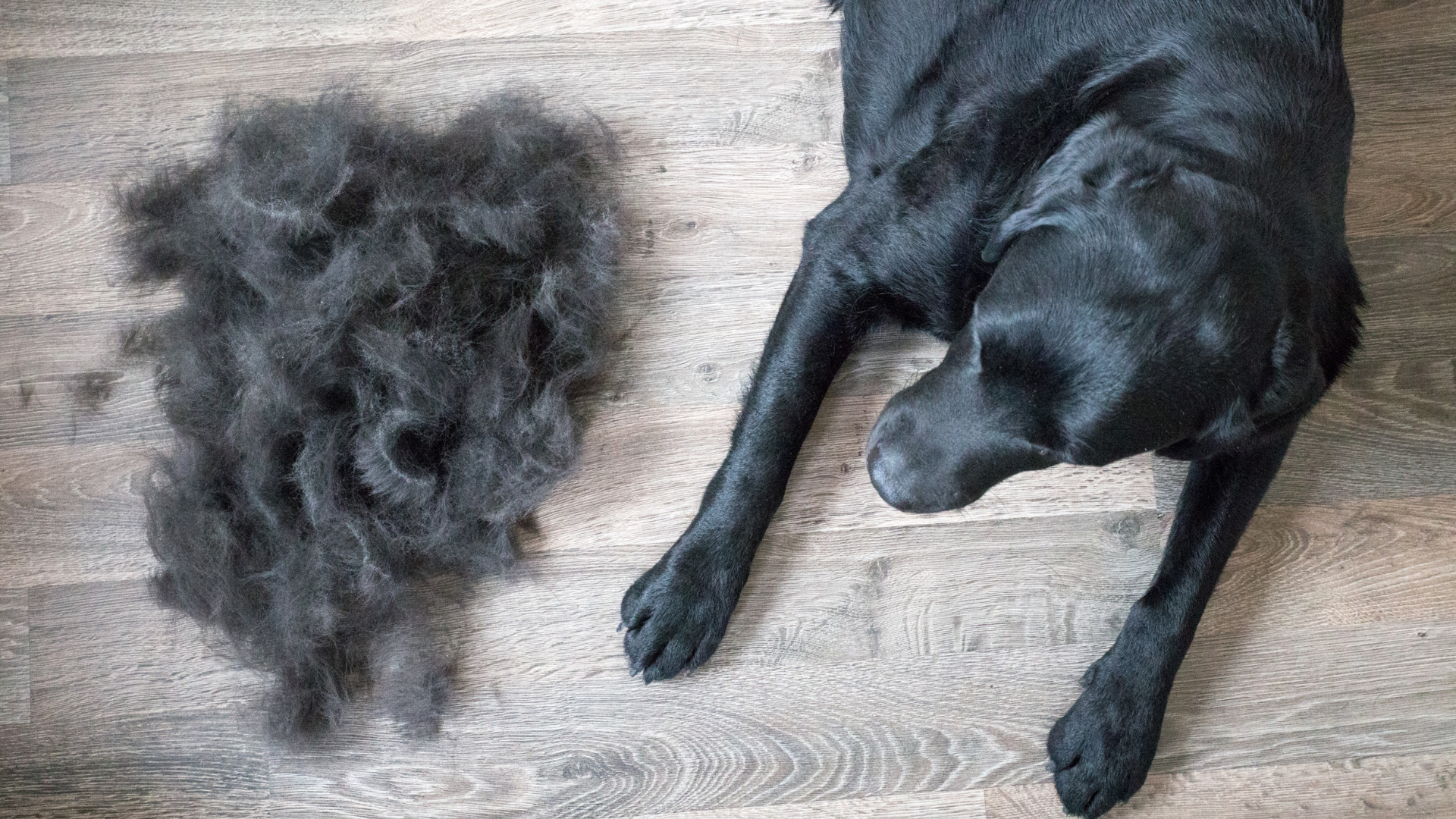Hair loss in dogs: causes, treatment and care tips
Hair loss in dogs can be a natural consequence of the coat change, but it can also indicate health problems. The concern of many dog owners is understandable when their four-legged friend loses more fur and bald patches become visible. In this comprehensive blog post, we take a detailed look at the causes of hair loss in dogs, when this hair loss is normal, and which treatments and preventative measures can help.
Natural coat change: How much hair loss is normal in dogs?
It is completely normal for dogs to lose more hair during the shedding period, which occurs twice a year. Dogs shed their fur in spring and fall. In spring, dogs shed their thick winter coat to prepare for warmer temperatures, while in fall, dogs shed their thin summer coat for a thicker winter coat. During this time, dogs lose a lot of fur, which is considered normal.
Tips to support the coat change:
-
Regular hair brushing : To help your dog during this hairy season, daily brushing is important. Removing the dead hair reduces the amount of fur your dog sheds while also promoting blood circulation to the skin, which supports coat health.
-
High-quality nutrition : A balanced diet with sufficient nutrients, especially omega-3 fatty acids, supports skin and coat health. Special nutritional supplements can also help during the coat change.

Excessive hair loss in dogs: When does it become problematic?
Excessive hair loss beyond seasonal shedding or the appearance of bald patches should not be ignored. Hair loss, also known as alopecia, can indicate various health problems. An important indicator that it is a serious problem are other symptoms such as itching, skin redness, dandruff or even wounds.
Parasites as a cause of hair loss in dogs
A common cause of hair loss are parasites such as fleas, mites and lice. These small pests cause itching, skin irritation and inflammation, which can lead to excessive scratching and thus increased hair loss. Mite infestation (e.g. demodicosis or mange) is particularly unpleasant for dogs and often leads to hair loss and bald patches.
How do you recognize parasite infestation in your dog?
Itching and scratching : If your dog is constantly scratching or licking certain areas, parasites could be the cause.
Bald spots : Localized hair loss, especially around the eyes, ears or stomach, may indicate parasites.
Treatment of parasites:
In the case of a parasite infestation, special shampoos or spot-on preparations that kill the pests can help. Regular deworming and the use of flea and tick protection products can help prevent an infestation.
Allergies as a trigger for hair loss in dogs
Just like people, dogs can suffer from allergies that manifest themselves in skin irritation and hair loss. Typical allergies affect food, pollen, house dust or even cleaning products. These allergies often cause severe itching, which leads to increased scratching and hair loss.
How can you recognize allergies in dogs?
-
Itching : Your dog often scratches or bites certain parts of his body.
-
Redness and swelling : Allergic reactions can cause visible skin changes.
Treatment of allergies:
Treating allergies often requires a precise diagnosis by a veterinarian to identify the trigger. In the case of food allergies, a so-called elimination diet is often used, in which the dog is fed only hypoallergenic food in order to monitor the reaction.
Hormonal disorders and hair loss
Hormonal imbalance can also be a cause of hair loss in dogs. The most common hormonal disorders include hypothyroidism (underactive thyroid) and Cushing's syndrome (overproduction of cortisol). Both conditions lead to a general deterioration of the coat, hair loss and other health problems such as weight gain, fatigue and susceptibility to infections.
How do you recognize hormonal problems?
Symmetrical hair loss : Typical of hormonal disorders is symmetrical hair loss, which often occurs on the flanks, neck or tail.
Other symptoms : Fatigue, weight gain, and increased drinking and urination can also indicate hormonal problems.
Treatment of hormonal disorders:
Hormonal disorders usually require medication to restore the hormonal balance. For example, if the dog has an underactive thyroid, thyroxine is administered, while Cushing's syndrome is treated by regulating cortisol production.
Hereditary hair loss disorders: Genetic predisposition in certain breeds
Hereditary hair loss is a lesser-known but still common cause of alopecia in dogs. Some dog breeds are genetically more prone to certain forms of hair loss, which often begin in puppyhood or the first few years of life. An example of such a hereditary condition is follicular dysplasia, in which the dog's hair follicles have an abnormal structure and cannot grow properly. This results in sparse fur or bald patches that are typically distributed symmetrically across the body.
Racial susceptibility:
Certain breeds, such as Dobermans, Dalmatians, German Shepherds and Chow Chows, are more likely to suffer from genetic hair loss. Due to their genetic predisposition, these dogs are at a higher risk of their hair follicles not working properly or suffering from other hereditary skin problems.
Symptoms of genetic alopecia:
The symptoms of hereditary alopecia often appear in the first years of the dog's life and can manifest themselves in the form of thin or irregularly growing hair. A typical feature is symmetrical hair loss, which usually occurs without other symptoms such as itching or inflammation. The skin may appear thinner or discolored in the affected areas.
Diagnosis and treatment:
Diagnosing hereditary hair loss disorders often requires special tests, such as a skin biopsy, to determine the exact cause. Unfortunately, there are limited treatment options for genetic hair loss because the underlying cause lies in the dog's DNA. In some cases, special grooming products and shampoos can help soothe the skin and improve coat health. However, it is important to have realistic expectations because hair growth often cannot be fully restored. A healthy diet with high-quality food supplements containing omega-3 fatty acids and biotin can support skin health and improve the overall condition of the coat.
Nutrient deficiency: The underestimated trigger of hair loss in dogs
A nutritional deficiency is an often overlooked cause of hair loss in dogs, but it plays a central role in the health of the skin and coat. Your dog's diet not only affects his general well-being, but is also crucial for skin and coat health. A lack of important nutrients such as omega-3 and omega-6 fatty acids, zinc, biotin or vitamin E can lead to dry skin, dandruff and hair loss.
Nutrients that are crucial for coat growth:
-
Omega-3 and Omega-6 fatty acids : These fatty acids are essential for healthy skin and a shiny coat. They have an anti-inflammatory effect and help regenerate skin cells. A deficiency can lead to dry, flaky skin and brittle coat.
-
Biotin (Vitamin B7) : Biotin plays a key role in the formation of keratin, the protein that makes up hair. It promotes the growth of healthy hair and strengthens hair follicles. A biotin deficiency can lead to dull hair and hair loss.
-
Zinc : This trace element is necessary for cell division and your dog's immune system. A zinc deficiency can lead to skin problems such as itching, inflammation and hair loss.
Consequences of a nutrient deficiency:
A dog that is fed an unbalanced diet over a long period of time will often show signs of poor coat quality. The coat becomes dull, brittle and falls out more quickly. Dogs with chronic nutrient deficiencies are also prone to other health problems, such as skin infections and a weakened immune system.
How can you prevent nutrient deficiencies?
-
High-quality food : The easiest way to prevent nutritional deficiencies is to feed a high-quality, balanced food that is specifically tailored to the dog's needs.
-
Supplements : If your dog is particularly prone to hair loss, it may be useful to add supplements. These often contain essential fatty acids, biotin and zinc, which support coat growth.
-
Regular veterinary check-ups : To ensure that your dog receives all the necessary nutrients, you should visit the vet regularly and have a blood test done if necessary.
Psychological stress as a cause of hair loss in dogs
Stress and anxiety can also lead to health problems in dogs. Long-term stress, such as environmental changes, lack of exercise or conflicts with other dogs, can trigger hair loss and other behavioral problems.
How can you recognize stress?
-
Changed behavior : Your dog appears nervous, withdraws, or shows increased licking or scratching.
-
Frequent licking : Stress-related hair loss is often manifested by increased licking of certain parts of the body.
Stress management:
-
Exercise and mental stimulation : Make sure your dog gets enough exercise and mental stimulation to reduce stress.
-
Calm environment : Create a stress-free environment and avoid unnecessary changes.
When should you take your dog to the vet?
If your dog's hair loss is sudden, unusually severe, or accompanied by other symptoms such as itching, inflammation, or behavioral changes, it is important to see a veterinarian. Early diagnosis can help prevent more serious conditions.
Conclusion to hair loss in dogs
Hair loss in dogs can have many different causes, from natural processes such as shedding to serious health problems. Careful observation, regular grooming and a balanced diet can go a long way in maintaining your dog's coat health. However, if your dog is losing hair excessively or has accompanying symptoms, a visit to the vet is essential to determine the exact cause of the hair loss and to be able to treat it specifically.

